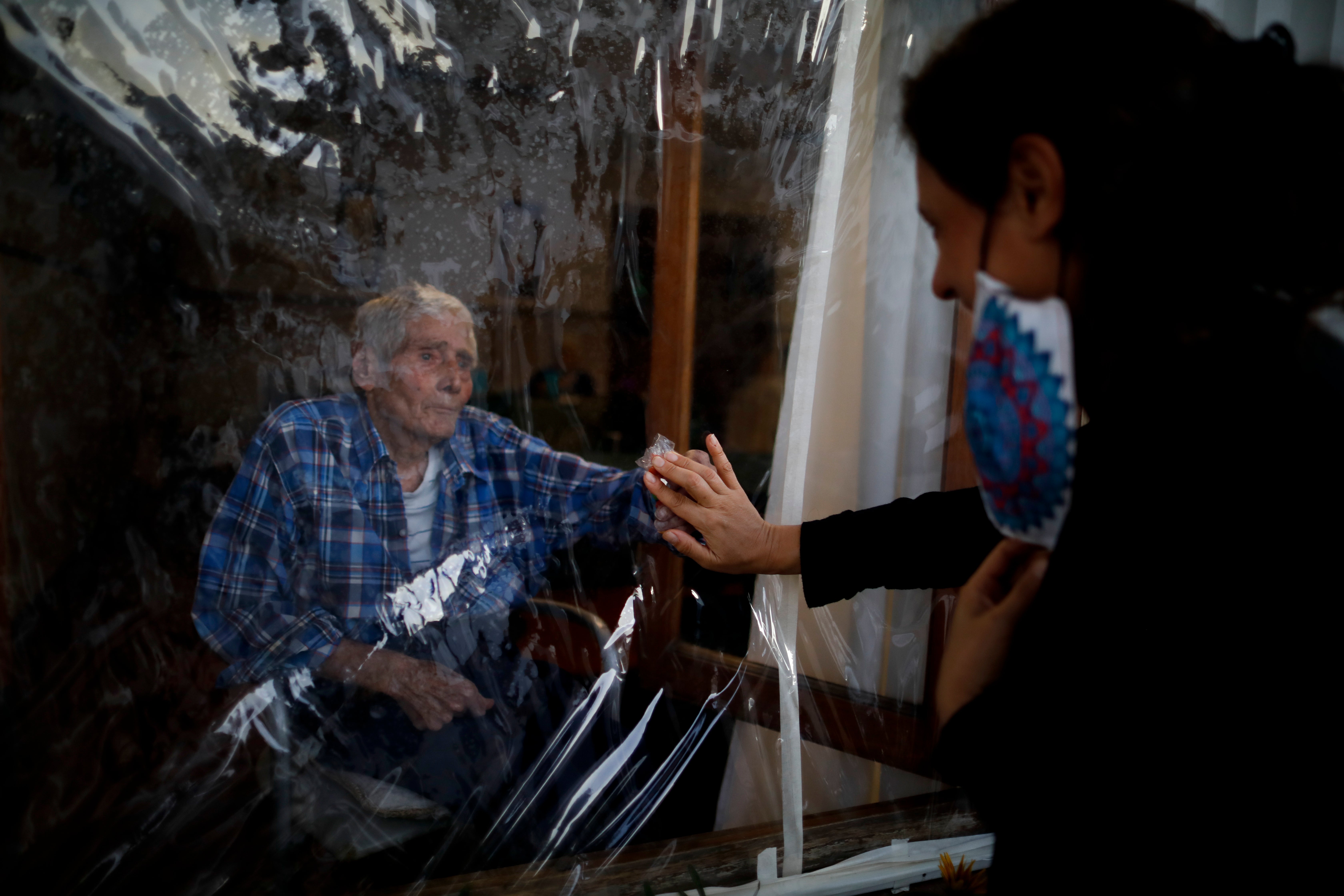BEHIND THE LENS: Virus, vaccine, and some arresting images
Chronicling COVID for a second straight year, and this year’s vaccine saga, AP photographers found new ways of telling the story

DATE: April-October 2021
PLACE: Tandil, Argentina; New Delhi, India; Quezon City, Philippines; Havana Cuba; Rivne, Ukraine.
PHOTOGRAPHERS: Natacha Pisarenko; Amit Sharma; Aaron Favila; Ramon Espinosa; Evgeniy Maloletka.
___
How does the eye even begin to process this image? A man running through funeral pyres of COVID-19 victims at a crematorium in India as if fleeing death itself, captured by Amit Sharma.
Chronicling the coronavirus and the disease it causes for a second straight year, and this year's vaccine saga, AP photographers found new ways of telling the story.
Natacha Pisarenko in Argentina found her muse in a piece of clear plastic, the sort-of, kind-of touchpoint that separated an 86-year-old man and his daughter-in-law who came together under COVID protocols. Ramon Espinosa found it by combining two notions in Cuba -- nuns being vaccinated and a framed image of Che Guevara.
Aaron Favila in the Philippines found it in little Kian Navales, sitting in a chair holding a pillow that bears the image of his late father, Arthur, who died of COVID. The boy misses going out for noodles with his dad.
And in a photo that’s hard to look away from, Evgeniy Maloletka photographed a coffin containing the body of a man who died of COVID in Rivne, Ukraine. The man is wearing a shirt and blazer. Only his mouth is visible. His arms are crossed, and in his right hand he is carrying a cross.
Lonely, just like COVID itself.
___
QUOTED
Amit Sharma, Associated Press photographer:
“On that bleak April afternoon at Ghazipur crematorium in New Delhi, India, there were burning bodies as far as the eye could see. I had just reached the grounds, my profession weighing heavy on my mind. I was anxious about capturing the frightening scene before me and searched for an anchor amidst the burning pyres. After only a few clicks of my camera, I felt as if the smell of burning corpses filling my nose, the heat of the pyres searing my flesh, the smoke blinding me and the wailing screams of those who had lost their loved ones, which filled my eyes with tears, were trying to drive me out. With tears flowing, I sat down on a bench nearby. I saw a man running amongst the hundreds of pyres. It seemed as if humanity was about to end. Nothing would be left. Corona would not spare anyone. That night, I couldn’t sleep. The screams and the smell of burning flesh overpowered me. Even today, when I see this picture, the orgy of death scares me and my heart trembles.”
Natacha Pisarenko, Associated Press photographer:
“Everyone is deprived of closure. Kids lose parents and can’t say goodbye. People are buried on their own with nobody there. It’s a story that makes us stop and think what is happening to all of us beyond age, religion, nationality or class.”
___
For a full overview of the events that shaped 2021, “A Year That Changed Us: 12 Months in 150 Photos,” a collection of AP photos and journalists’ recollections, is available now: https://www.ap.org/books/a-year-that-changed-us
Bookmark popover
Removed from bookmarks